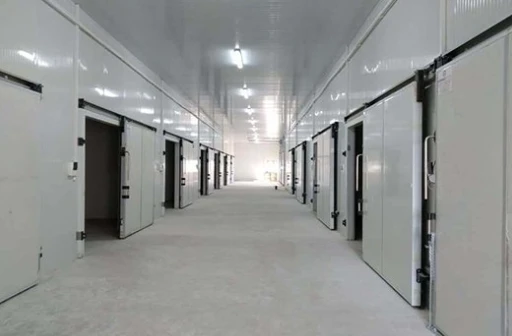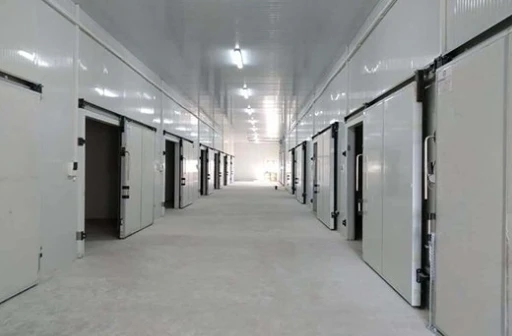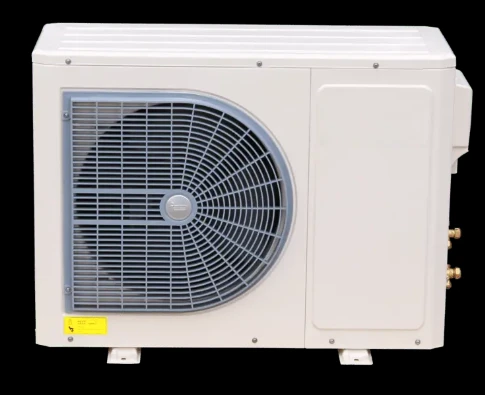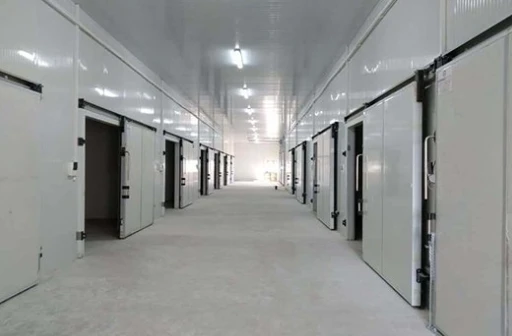Chiller Reduces Energy Costs
In the realm of industrial and commercial cooling, compression chiller, glycol chiller, chiller, and ice bath chiller stand as pivotal technologies, each engineered to meet specific cooling demands with precision and efficiency. These systems are the backbone of temperature control in industries ranging from food and beverage production to pharmaceuticals, plastics manufacturing, and data centers, where stable and controlled low temperatures are non-negotiable for process integrity, product quality, and equipment longevity. This article delves into the technical principles, operational advantages, and practical applications of these chillers, offering a comprehensive guide for engineers, facility managers, and business owners. From the mechanical reliability of compression chillers to the freeze-resistant versatility of glycol chillers, the scalable performance of general chiller systems, and the rapid cooling of ice bath chillers, we explore how these solutions address diverse industrial challenges, ensuring reliability, energy efficiency, and cost-effectiveness.
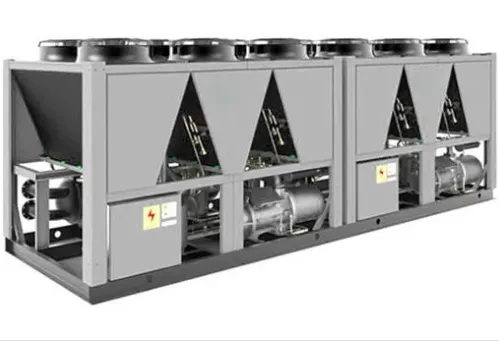
The Mechanisms and Applications of compression chiller
A compression chiller is a cornerstone of mechanical cooling, operating on the vapor-compression cycle to remove heat from processes or environments. This makes it one of the most widely adopted chillers in industrial settings, valued for its high cooling capacity, scalability, and ability to maintain precise temperature control.
How a compression chiller Works:
- Compression Stage: A compressor elevates the pressure and temperature of the refrigerant (e.g., R-410A, ammonia), transforming it from a low-pressure vapor into a high-pressure, high-temperature vapor.
- Condensation Stage: The hot refrigerant vapor travels to a condenser, where it releases heat to a cooling medium (air or water), condensing into a high-pressure liquid.
- Expansion Stage: A thermal expansion valve reduces the pressure of the liquid refrigerant, causing it to vaporize and cool significantly.
- Evaporation Stage: The cold refrigerant vapor absorbs heat from the process fluid (e.g., water, glycol) in the evaporator, cooling it to the desired temperature before the cycle repeats.
Key Advantages:
- High Cooling Capacity: Capable of delivering 10–1,000+ tons of refrigeration (TR), suitable for large-scale industrial processes like plastic molding or data center cooling.
- Precision Control: Maintains process temperatures within ±0.5°C, critical for pharmaceutical manufacturing or chemical synthesis.
- Energy Efficiency: Modern models feature variable-speed drives and heat recovery systems, reducing energy consumption by up to 30% compared to older designs.
- Reliability: Simple mechanical design with few moving parts ensures long operational life with minimal maintenance.
Industrial Applications:
- Food Processing: Cooling pasteurization lines, fermentation tanks, and beverage bottling systems to preserve product quality.
- Data Centers: Maintaining optimal temperatures for server rooms, preventing overheating and equipment failure.
- HVAC Systems: Providing centralized cooling for commercial buildings, such as offices, hospitals, and shopping malls.
- Metalworking: Chilling cutting fluids to enhance tool life and precision during machining operations.
Exploring the Advantages of glycol chiller
A glycol chiller is a specialized cooling system that uses a glycol-water mixture as the heat transfer fluid, designed to operate at sub-zero temperatures without freezing. This makes it indispensable for applications where direct refrigeration is impractical or where the cooling medium must be non-toxic, non-corrosive, or compatible with sensitive processes.
Core Components and Operation:
- Glycol Mixture: A solution of ethylene glycol (industrial) or propylene glycol (food-grade) mixed with water, chosen for its low freezing point.
- Indirect Cooling: The chillercools the glycol mixture in the evaporator, which is then pumped to heat exchangers in the process area, transferring cold to the target fluid without direct refrigerant contact.
- Corrosion Protection: Stainless steel components or anti-corrosive coatings safeguard against the glycol solution’s potential to degrade metal over time.
Key Features:
- Freeze Protection: Ideal for cold climates or sub-zero processes, preventing ice formation in pipes and ensuring continuous operation.
- Non-Toxic Options: Food-grade propylene glycol is safe for direct contact with food or pharmaceuticals, making it suitable for beverage production or medical storage.
- Remote Cooling: Capable of delivering chilled glycol over long distances, enabling decentralized cooling in large facilities or outdoor setups.
- Scalability: Available in both small-scaleand large-scale models to suit diverse industrial needs.
Typical Applications:
|
Industry |
Cooling Task |
Benefit of glycol chiller |
|
Breweries |
Chilling fermentation tanks and wort cooling |
Food-grade glycol ensures product safety and flavor |
|
Pharmaceutical |
Maintaining low temperatures for vaccine storage |
Non-toxic fluid prevents contamination risks |
|
Renewable Energy |
Cooling geothermal heat pumps in freezing climates |
Prevents pipe bursts in sub-zero ambient temperatures |
|
Industrial Freezing |
Chilling conveyor belts in meat processing plants |
Flexible heat transfer for complex, multi-zone systems |
The Role and Design of chiller Systems in Industrial Cooling
A chiller is a broad term encompassing any system that removes heat from a liquid or gas, providing cooled fluid for industrial processes or environmental control. While the previous sections focus on specific types, this section explores the broader landscape of chiller systems, their common components, and how they adapt to different industry needs.
Common Components Across chiller Types:
- Refrigeration Loop: Includes compressors, condensers, evaporators, and expansion valves, regardless of whether the chilleris compression-based, glycol-cooled, or ice bath-driven.
- Cooling Medium: Varies by type—direct refrigerant (compression chillers), glycol-water mixtures (glycol chillers), or ice slurry (ice bath chillers)—each chosen for specific temperature ranges and process compatibility.
- Control Systems: Digital controllers monitor temperature, pressure, and flow rates, optimizing performance and enabling remote monitoring for predictive maintenance.
Key Considerations When Selecting a chiller:
- Cooling Capacity: Small chillersfor localized tasks; large chillers (50–1,000+ TR) for industrial-scale processes.
- Environmental Factors: Water availability (for water-cooled systems), ambient temperature, and corrosion risks in the facility.
- Energy Efficiency: Look for models with Energy Star certification, variable-speed drives, or heat recovery systems to reduce operational costs.
Unveiling the Benefits of ice bath chiller
An ice bath chiller is a specialized cooling system that leverages ice as a thermal energy storage medium, providing rapid and consistent cooling by melting ice to absorb heat from processes. This makes it ideal for applications requiring short-term, high-intensity cooling or thermal energy storage to balance load demands.
How an ice bath chiller Operates:
- Ice Generation: During off-peak hours, the chillerfreezes water in a storage tank, creating a reservoir of ice.
- Cooling Phase: During peak demand, the ice slurry is circulated through the process loop. As ice melts, it absorbs heat (utilizing the latent heat of fusion), cooling the process fluid without overworking the compressor.
- Recharge Cycle: The system re-freezes the melted water during the next off-peak period, maintaining a continuous cycle of ice production and melt.
Unique Advantages:
- Peak Load Shifting: Reduces energy costs by using cheaper off-peak electricity for ice generation, lowering reliance on expensive peak-hour power.
- Rapid Heat Absorption: Ice provides instant cooling capacity, critical for processes like rapid food chilling to meet HACCP standards.
- Thermal Buffer: Acts as a backup cooling source during power outages or equipment malfunctions, ensuring short-term temperature stability.
- Compact Design: Ice storage tanks can be located remotely, freeing up space in the main facility and simplifying installation.
Ideal Applications:
- Food Processing: Rapidly cooling cooked meats, soups, or baked goods to below 10°C within 2 hours, minimizing bacterial growth.
- Laser and Medical Equipment: Cooling high-heat-generating devices like MRI machines or industrial lasers, which require instant heat dissipation to maintain precision.
- HVAC in Hot Climates: Storing ice at night to meet daytime cooling demands, reducing the load on air conditioning systems and lowering energy costs.
- Laboratory Settings: Providing stable, low-temperature baths for chemical reactions or biological experiments that require consistent cooling.
FAQS about compression chiller, glycol chiller, chiller, and ice bath chiller
How does a compression chiller differ from a glycol chiller in terms of cooling medium?
A compression chiller uses a direct refrigerant in its refrigeration cycle, where the refrigerant absorbs heat from the process fluid in the evaporator and releases it to the environment via a condenser. In contrast, a glycol chiller uses a glycol-water mixture as an indirect heat transfer fluid. The chiller cools the glycol, which then circulates to cool the target process fluid, making it suitable for applications where the cooling medium must be non-toxic, freeze-resistant, or transported over long distances.
What are the primary advantages of using an ice bath chiller for food processing?
An ice bath chiller offers two key advantages for food processing:
- Rapid Cooling Compliance: Meets HACCP requirements by quickly reducing the temperature of hot foods, minimizing bacterial growth and ensuring food safety.
- Energy Cost Savings: Generates ice during off-peak hours when electricity is cheaper, then uses the stored ice for cooling during peak production, reducing overall energy expenses.
These benefits are critical for facilities processing perishable items like meats, dairy, or ready-to-eat meals.
How do I determine the right size of chiller for my manufacturing facility?
To determine the right chiller size:
- Calculate Cooling Load: Measure the total heat generated by processes, equipment, and ambient conditions. This includes latent heat (e.g., from evaporation) and sensible heat (temperature changes).
- Account for Peak Demand: Include a safety margin to handle unexpected heat spikes or future expansion.
- Consider Efficiency Ratings: Choose a chillerwith a high Coefficient of Performance to minimize energy use. For example, a chiller with a COP of 3.5 consumes 3.5 units of cooling for every 1 unit of energy used.
Consulting with manufacturers or using their sizing tools can help ensure an accurate fit for your facility’s needs.
Can a glycol chiller be used in outdoor environments with extreme temperatures?
Yes, a glycol chiller can operate outdoors in extreme temperatures, thanks to its freeze-resistant glycol mixture. However, ensure the following:
- Glycol Concentration: Use a higher glycol ratio for extremely cold climates to lower the freezing point below the expected minimum ambient temperature.
- Weather Protection: Install the chillerin a shaded, covered area to protect electrical components from direct sunlight, rain, or snow.
- Ventilation: Ensure adequate airflow around the condenser to prevent overheating in hot weather, as poor ventilation can reduce cooling efficiency.
These precautions allow glycol chillers to perform reliably in harsh outdoor environments, such as construction sites or remote industrial facilities.
What maintenance practices are essential for a compression chiller to operate efficiently?
Key maintenance practices for a compression chiller include:
- Regular Filter Cleaning: Clean or replace air filters (for air-cooled models) or water filters (for water-cooled models) to maintain optimal airflow or water flow, preventing reduced heat transfer.
- Refrigerant Checks: Monitor refrigerant levels and pressure monthly to detect leaks early, as low refrigerant can cause inefficient cooling and compressor damage.
- Lubrication and Belt Tension: Lubricate moving parts (e.g., fan motors, compressor bearings) and adjust drive belts quarterly to prevent noise, vibration, and premature wear.
- Control System Calibration: Annually calibrate temperature sensors and update software to ensure accurate temperature regulation and fault detection.
Don’t let inefficient cooling compromise your productivity or product quality. Visit our website today to explore our comprehensive product line, request a personalized consultation, or download our free guide to industrial cooling best practices. Discover how our chillers can enhance your facility’s performance, reduce energy costs, and support your business’s growth. The right cooling solution is essential for operational excellence—trust [Shijiazhuang Xuexiang Refrigeration Euquipment Co.,Ltd] to deliver technology that meets your needs today and prepares you for tomorrow’s challenges. Contact us now and take the first step toward a more efficient, reliable cooling system. Your success starts with the right chiller partner.













































































































